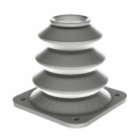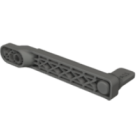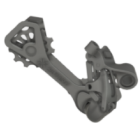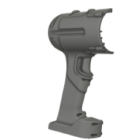Printing 3D
Once your model is sliced, your parameters are set, and your printer is ready — the actual process of 3D printing begins. This phase is where digital intent becomes physical reality. But despite its high-tech appearance, printing in 3D is as much about planning and optimization as it is about pressing “Start.”
This chapter dives into what really happens during the 3D printing phase, how long prints take, and what factors determine the success or failure of a job.
How 3D printing works in practice
At its most basic, 3D printing is an additive process: the printer builds up the object layer by layer. Depending on the technology used — FDM, SLA, SLS, MJF, or DMLS — the material may be extruded, cured, fused, or sintered. But the fundamental idea remains the same: turn sliced data into a three-dimensional object, one cross-section at a time.
During this phase, the printer follows the G-code instructions generated during slicing. This includes pathing, movement speeds, temperature settings, material flow, and layer changes. The accuracy of this execution is critical. Even small deviations — such as a shift in bed leveling or an inconsistent feed rate — can compromise print quality.
How long do 3D prints take?
This is one of the most common and most variable questions in additive manufacturing. The answer depends on several key factors:
- print size — larger parts naturally take more time to complete,
- layer height — thinner layers improve resolution but increase print time significantly,
- print speed — determined by the machine’s hardware and material properties — faster isn’t always better,
- infill density — solid parts take longer than hollow or lightly filled ones,
- support structures — additional geometry adds time both during printing and post-processing.
To give a practical example:
A small FDM part (like a phone holder) might take 1–2 hours.
A complex SLA miniature could take 6–10 hours.
A full build in SLS or MJF with dozens of parts may run overnight or even longer — but prints can be nested to maximize throughput.
The takeaway: print time is not only a technical constraint — it’s a planning variable. The most experienced users design parts with printability in mind from the very beginning.
Continuous monitoring and quality assurance
Once a print begins, modern machines often include monitoring features to ensure a smooth process. These may include:
- bed leveling sensors,
- temperature and material flow controls,
- optical systems for layer inspection (in metal and resin printers).
In professional or production environments, machines may even pause or terminate a print automatically if errors are detected — reducing wasted time and materials.
Post-processing starts here
Although post-processing is technically a separate stage, it’s important to note that the way a print is executed influences what happens after. Parts with support structures, low resolution, or minor surface issues will require more cleanup, sanding, curing, or depowdering.
Choosing the right print settings at the slicing stage — and understanding how they play out during the print — can dramatically shorten the post-processing timeline.
More about post-processing in 3D printing you can find here.
Summary: printing is execution, not just output
“3D Printing” is not just about hitting a button — it’s the culmination of every decision made beforehand. From print orientation and layer thickness to infill patterns and material selection, the printing stage reflects your entire workflow strategy. Understanding how this phase works — and how to optimize it — is key to getting consistent, high-quality results from your additive manufacturing process.
Explore also
- What is the 3D printing process?
- 3D printing process step by step
- How to make a 3D model for printing?
- What is 3D slicing in printing? Key to print quality and success
- Understanding 3D print settings for better results
- The additive manufacturing process: how 3D printing builds layer by layer
- What is post-processing?
- Why do 3D prints fail?
Related categories













